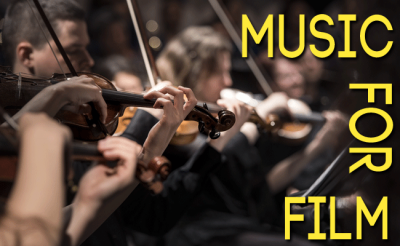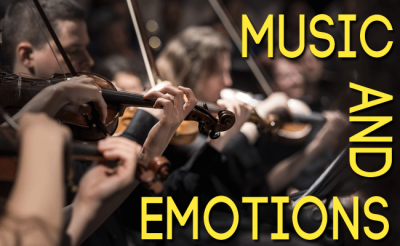10 Words to Describe Music
Musical Parameters
 Welcome to a carefully crafted list of words to describe music.
Welcome to a carefully crafted list of words to describe music.
Music can be very inconceivable and hard to describe thanks to its almost magical nature. Especially, when you need someone to translate ideas, emotions and messages into music it is quite difficult to communicate your internal musical concepts in a way that someone understands them sufficiently enough to come close to your ideals. For example, you are a film creator and want a composer to create the most fitting and beautiful music that forms a symbiosis with the deeper meaning of the images. How can you steer the composer towards the musical ideal you perceive internally? Or imagine, you are in a band, wrote the perfect song and now need to instruct your drummer, bass player and guitar player about how they should accompany you. What words do you use to make your message clear?
If you are stuck in a comparable situation then you came to the right place. The following article explains how you can describe music using the 10 most common musical parameters: Rhythm, tempo, harmony, melody, instrumentation, dynamic, texture, genre, form and temperature. If you use this 10 words to describe music you are much more capable of talking about it while actually expressing yourself clearly and understandably.
Each musical parameter stands for a category through which music can be described. Thinking in categories has many advantages. It is proven that categorical thinking stimulates memorization. Categories also function as boundaries for your thinking which make focussing easier.
Each presented category contains a variety of words that can be used in its context. For example, “this tune has a warm temperature”(category 9), or “speaking over dynamic, this song has a smooth fade-out” (category 6) or to show off, “the music I am thinking of resembles a baroque fugue with polyphonic texture and complex harmonic structure” (category 3,7,8,9). This list by no means claims completeness but it is a good starting point when learning to describe music.
>> Check out My Music on Audiojungle <<
1 – Rhythm
- Off-beat – on-beat
- 4-to-the-floor
- Strong/weak beat
- Sloppy – tide
- Simple – complex
- High/low density
- Quantized
- 4/4 meter, 3/4 Meter
- Syncopated
- Regular – irregular
2 – Tempo
Tempo is easy to comprehend because it is measurable. Beats-per-minute tell you exactly how fast a song is whereas classical trained musicians are used to work with tempo indications like, “moderato” or “adagio” which leave more room for interpretation.
- Beats per minute (bpm)
- Tempo rubato (free)
- Speed-up – slow-down
- Fast (Upbeat)
3 – Harmony
To take it a little further than saying music is either happy or sad, try to express yourself by saying it is harmonic, tonal, atonal, or has a complex harmonic structure.
- Harmonic – disharmonic
- Consonant – dissonant
- Major – minor
- Tonal – atonal
- Simple – complex
- Monotonic – rich
4 – Melody
There are many words to describe melody but this are the ones I use the most. Composing a catchy singable melody is what I am striving for.
- Simple – complex
- Staccato – legato
- Small/big intervals
- Singable
- Catchy
- Improvised
- Happy – sad
- Uplifting
5 – Instrumentation
There are two levels of describing instrumentation: instrument groups (like orchestra, ensemble or choir) and single instruments (like hobo, guitar or synth). Google for more instruments and instrument groups to enhance your vocabulary even further.
- Orchestra
- Solo
- Jazz Band
- Rock Band
- Ensemble
- Double bass
- Violin
- Hobo
- Electric guitar
- Piano
- Percussion
- …
6 – Dynamic
In music, dynamic is the difference in loudness. An orchestra has a high dynamic range whereas dance music most of the time has not.
- Crescendo – decrescendo
- Velocity
- Loudness
- Soft, quite, muted – loud, intense, powerful
- Pianissimo – piano – forte – fortissimo
- Consistent – explosive
- High/low dynamic range
- Fade-in – Fade-out
7 – Texture
This musical parameter might sound a little vague in the beginning but once you understand it, it is very useful to describe music. Search some YouTube videos about polyphony and monophony to get a better grasp of texture.
- Monophonic (one melody, solo)
- Homophonic (one main melody)
Polyphonic (many simultaneous melodies, counterpoint)
Heterophonic (homophony with occasional variation of individual voices)
- Dense, full, thick, fat – light, open, spare, thin
- Simple – complex
8 – Genre
Ah, genres … There are millions of them. Genres are a common way to describe music but they are only useful, when both parties know what musical elements genre is known for.
- Classical: Baroque, Romantic, Classic …
- Avant-garde: Experimental, Free Jazz, Musique Concrète …
- Contemporary: Jazz, Rock, Dance, Soul …
- Popular music – Underground music
- Film music
9 – Form
Yes, there is more to musical form than just the song! In the classical era a good form was an important factor for a good composition. In our times there are less agreed-upon musical forms but yet underneath the surface form still plays a big role, precisely because it is less rigid.
- Structure: A – A’ – B – A, 12-bar blues, repetition, chorus, verse, intro, bridge, middle eight, instrumental
- Musical form: Symphony, requiem, fugue, song …
10 – Temperature
Temperature is probably the most vague musical parameter but in my eyes it is the most interesting. Play around with the words and try to come up with your own adjectives to describe the timbre of songs you are listening to.
- Timbre
- Sound color
- Warm – cold
- Noisy – clear
- Overtones, harmonics
- Acoustic – electronic
- Low – mid – high frequencies
- Dark, mellow, muddy – light, pure, bright, clean, vibrant
- Harsh, rough, shrill, piercing – dull, muffled, boring
Those were the 10 most common words to describe music or better said 10 musical parameters. Try to expand your vocabulary beyond the words I listed here and become skillful at describing music. Also, download this article in PDF format so that you can print it out and whenever needed. If you have any suggestions or questions leave a comment below and I will get back to you.








Thank you Dario for your article. I too am very interested in music and am looking to start a website. Are you Italian by any chance? My mother is Italian and I have learnt a lot about music creativity when I lived in Italy. I’ve also stumbled upon this amazing Italian pop song – can you tell me the bans’s name?
Staccato and legato are actually elements of articulation. Whether music is happy or sad relates to whether it is major or minor, which are elements of tonality. The feel of the music is tone. So why were these in melody…
Hey Roberta,
Yes staccato and legato are articulations but in order to explain how a melody is played and sounds like describing the articulation can be reasonable. Do you agree?
Hi Dario this is an awesome article .Thanks for this
Am starting a blog and this could be a good read to my readers.Do you mind if i use part of your article as long as i give credit to you / your blog?.Eagerly waiting for your response.
Regards
I want your bullets to link to more definition/ be more descriptive. I need to practice using richer vocabulary around children and be able to explain seamlessly
you have polyphonic and heterophonic reversed
you are right thanks for the hint!
Hello my name is Derbena,
Music is my passion! Everyday of my life music is my everything. I work as a caregiver even though I’m tired..When I came home I sing or listening to music or I sing in a Smule Karaoke most of the time.
thanks for the information
crewed catamaran charters caribbean https://european-sailing.com/rent-yachts-caribbean